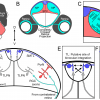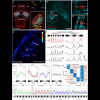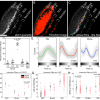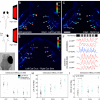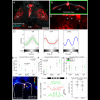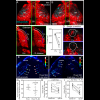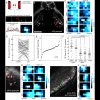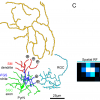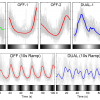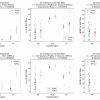Description
Background: A common feature of vertebrate visual systems is that lower-order and higher-order visual areas are reciprocally connected. Feedforward projections confer visual responsiveness to higher-order visual neurons while feedback projections likely serve to modulate responses of lower-order visual neurons in a context-dependent manner. Optic tectum is the largest first-order visual brain area in zebrafish and is reciprocally connected with the torus longitudinalis (TL), a second-order visual brain area that does not receive retinal input. A functional role for feedback projections from TL to tectum has not been identified.
Results: In this study we demonstrate that TL feedback projections to tectum drive binocular integration and spatial summation in a defined tectal circuit. We performed genetically targeted, cell type-specific functional imaging in tectal pyramidal neurons (PyrNs) and their two input neuron populations: retinal ganglion cells (RGCs) and neurons in TL. We find that PyrNs encode gradual changes in scene luminance using a complement of three distinct response classes that encode different light intensity ranges. Functional imaging of RGC inputs to tectum suggest that these response classes originate in the retina and RGC input specifies PyrN functional classes. In contrast, TL input serves to endow PyrNs with large, compound receptive fields that span both retinal hemifields.
Conclusions: These findings reveal a novel role for the zebrafish TL in driving binocular integration and spatial summation in tectal PyrNs. The neurlal circuitry we describe generates a population of tectal neurons with large receptive fields tailored for detecting changes in the visual scene.
Cite this work
Researchers should cite this work as follows:
- Robles, E. (2021). Input from torus longitudinalis drives binocularity and spatial summation in zebrafish optic tectum. Purdue University Research Repository. doi:10.4231/STQE-9A91
